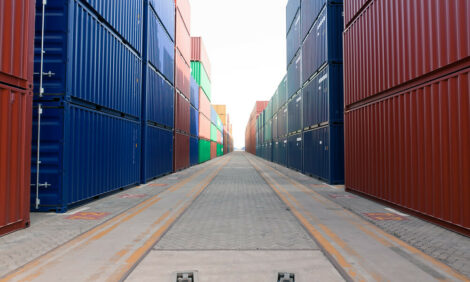



International Egg and Poultry Review: EU
EU - This is a weekly report by the USDA's Agricultural Marketing Service (AMS), looking at international developments concerning the poultry industry. This week's review looks at poultry meat market projections for the EU.EU poultry meat production is projected to grow seven per cent from 11.66 million metric tons (MMT) in 2009 to 12.46MMT by 2020, according to the European Commission for Agriculture and Rural Development report Prospects for Agricultural Markets and Income in the EU 2010-2020. Poultry meat consumption would increase by more than six per cent, from 23.25 kg per capita in 2009 to 24.72 kg per capita in 2020. By 2016, the EU would become a net importer of poultry when imports climb to 845,000 metric tons (MT) and exports fall to 810,000MT. These projections are based on specific assumptions regarding macroeconomic conditions, the agricultural and trade policy environment, weather conditions and international market developments.
In 2009, poultry remained the only meat sector with an expanding output, similar to 2008, driven by its relative price-competitiveness and advanced degree of convenience (meeting the preferences of processors, retailers and consumers) compared to other meat products. However, in order to remain competitive in the wake of constrained consumer demand and the relatively low and increasingly competitive pig meat prices, EU broiler market prices declined substantially in the last quarter of 2009.
While production reached slightly below 11.7MMT in 2009, the annual rate of increase remained marginal at 0.7 per cent. The impact of recession was visible in poultry meat imports that declined below 850,000MT (by almost -2 per cent) with the product mix displaying a switch from more expensive breast meat to cheaper meat cuts. Despite a cut in the specific EU refund rates, EU poultry meat exports increased by three per cent to the level of 940,000MT in 2009.
Domestic consumption appears to have remained fairly stable at slightly below 11.6MMT. Demand for poultry meat is projected to recover over the medium term, increasing by almost 10 per cent on aggregate to exceed 12.7MMT in 2020. Poultry meat consumption per capita is projected to stand at 24.7kg in 2020, more than six per cent higher than the 2009 level. This compares to 15.4kg for beef and veal, and less than 2kg for sheep and goat meat. However, consumer perceptions of meat consumption with relation to its environmental impact and animal welfare concerns could influence future demand.
Prospects for poultry meat exports are constrained by the assumed strengthening of the Euro, leading to a gradual reduction in EU exports to below 740,000MT in 2020, by -22 per cent on aggregate. EU imports would increase over the outlook by six per cent on aggregate and exceed 890,000MT in 2020. The EU will therefore gradually lose its net exporter status over the outlook, with net imports reaching 155,000MT in 2020. Beside the stronger currency and growing domestic demand, another factor supporting the gradual transformation of the net trade status is the relatively high EU poultry price in the face of firm production costs over the outlook. Another factor supporting the gradual transformation of the net trade status is the relatively high EU poultry price in the face of firm production costs in the outlook. Poultry production prospects would remain conditional on a strong recovery in EU demand.
The full report can be found online [click here].


New animal welfare strategy 2011-2015
Community legislation on farm animal welfare was first adopted in 1974 and concerned the stunning of animals before slaughter and addressed the basic five freedoms (freedom from discomfort, from hunger and thirst, from fear and distress, from pain, injury and disease and freedom to express natural behaviour). Since 2009, animals have been defined as sentient beings to be respected.
The Community Action Plan on the Protection and Welfare of Animals for 2006-2010 was adopted on 23 January 2006 to ensure that animal welfare policies were respected on long term in the strategies of the EU. The European Commission is now working on the follow-up plan for 2011-2015 that is expected to be adopted in December 2011.
A resolution adopted by Parliament in May 2010 said more frequent inspections and tougher penalties will be needed to enforce the next EU Animal Welfare Action Plan. Parliament emphasised the need to enforce existing rules, such as the ban on battery cages for hens. MEPs added that animal products imported in to the EU, such as meat, must also comply with welfare requirements. The Commission organized a meeting with Member States on 17 January 2011 and with main EU stakeholders on 31 January 2011 presenting the result of an evaluation on the EU policy options for the future strategy.
Source: EC Animal Welfare Action Plan; European Parliament Plenary Session
Further Reading
| - | You can view the full report by clicking here. |








